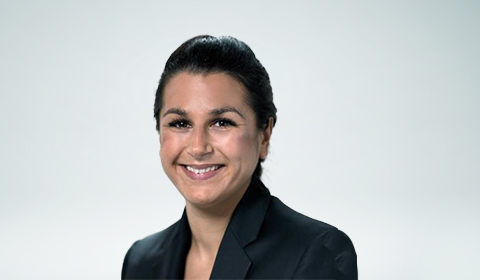What is funded reinsurance?
Funded reinsurance, or asset-intensive reinsurance, of bulk annuity transactions can be explained most simply as a collateralized buy-in between an insurer and a reinsurer. After entering a bulk annuity contract with a pension scheme, the insurer enters a separate reinsurance agreement to cover all, or part, of member benefits. The insurer pays a single premium to the reinsurer, at which point the reinsurer assumes responsibility for the cost of pension benefits, which it pays to the insurer to be distributed to the trustee or the members.
With a longevity swap, the insurer retains the assets and uses these to pay the ‘expected’ benefits and fee to the reinsurer, in exchange for the reinsurer paying the ‘actual’ benefits. Because the expected amounts transferred net off, there is no up-front payment of premium.
With funded reinsurance, the reinsurer essentially takes the payment of the expected benefits from the insurer up front as a fixed premium in return for paying the future reinsurance benefits. The added benefit for the insurer is that funded reinsurance also provides protection against the risk that assets do not perform as well as expected.
It is important to note that funded reinsurance is typically structured so that assets are collateralized and held within the U.K., a priority consideration for both insurers and regulators. With the right reinsurance partner, insurers receive the backing of a well-rated, highly diversified and credible partner – with assets readily available in the unlikely event of a failure of the reinsurer. Meanwhile, regulators can rest assured that investment in U.K. infrastructure and assets will not move offshore.
Why is it used? Who benefits from it?
Insurance companies tend to use funded reinsurance when the bulk annuity market is busy, and when very large transactions come to market. In both scenarios funded reinsurance can help to manage lumpy capital requirements and assist with operational restrictions around asset sourcing. From the reinsurer’s perspective, as a non-correlated risk, asset risk only further diversifies the balance sheet in the case of a multi-line, global, life reinsurer.
For the trustee, the insurer passing on asset risk might be counterintuitive, but the use of funded reinsurance can mean that:
- There is greater competition, and better pricing can be offered to the scheme.
- The industry can continue to provide buy-out cover for smaller schemes when multi-billion schemes come to market.
- The insurer has support from a well-rated, highly diversified and credible partner.
Furthermore, member security improves with a diversified global reinsurer sitting behind the insurance company, which might be much more exposed to volatility within a few geographies or business lines.
RGA is a market leader in addressing global longevity and pension risk transfer (PRT) solutions for sponsors. We enable plan sponsors to implement strategic and innovative de-risking solutions that ensure security for annuitants, backed by RGA’s superior financial strength. Learn more.



f79239c7-df7c-4456-a902-7094c2742acd.jpg?sfvrsn=ad6d347e_1)
